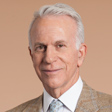How To Invest in Sectors With These Funds
Good investments don't all look alike. James K. Glassman walks you through sensible strategies for choosing which sectors to zero in on.


Asset managers such as Vanguard, State Street and BlackRock have made it easy to own individual sectors of the stock market through low-cost mutual and exchange-traded funds. But are they good investments?
The funds offer a simple way to diversify. For example, if your stock portfolio is heavy on shares of individual technology and energy companies, balancing those holdings with ETFs in sectors such as real estate and healthcare can provide a smoother ride. And a sector fund could make sense if you have a strong conviction that a particular area of the economy, such as finance, is underappreciated and will accelerate as investors recognize its true value.
I have been analyzing long-term data on Select Sector SPDR ETFs, which are managed by State Street and based on indexes that are subsets of the S&P 500 index, the large-company benchmark. Some of the results are striking.
From just $107.88 $24.99 for Kiplinger Personal Finance
Become a smarter, better informed investor. Subscribe from just $107.88 $24.99, plus get up to 4 Special Issues

Sign up for Kiplinger’s Free Newsletters
Profit and prosper with the best of expert advice on investing, taxes, retirement, personal finance and more - straight to your e-mail.
Profit and prosper with the best of expert advice - straight to your e-mail.
As you can probably guess, one sector has been a standout performer: technology. For the past 10 years, the average annual returns of seven out of the nine sector funds I studied fell into a narrow range, from 8.2% to 12.3%, but the Technology Select Sector SPDR Fund (XLK) averaged 20.7%. The tech fund was dominant throughout the decade: It was the top-performing sector fund in four of the past 10 calendar years and ranked in the bottom half only twice.
But you might be surprised at how some companies that most of us consider technology holdings are classified by S&P (and, therefore, State Street). For example, Amazon.com (AMZN, $180), which returned an average of 26.8% over the past 10 years, is in the consumer discretionary sector ETF, and Alphabet, Netflix (NFLX, $607) and Meta Platforms (META), the former Facebook, are all in the communications services sector fund. (Prices and other data are as of March 31 unless otherwise noted.)
Not including such stocks is a real drawback. That’s why I prefer Invesco QQQ Trust (QQQ, $444), which owns the largest Nasdaq companies, including all of the SPDR omissions. The ETF carries an expense ratio of 0.2%, compared with 0.09% for the State Street funds, an insignificant difference.
The other outlier over the past 10 years has been energy. The SPDR fund returned an average of just 4.6%. The sector was highly volatile, ranking first in three of the past 10 calendar years and last in six.
Sector fund returns converge... eventually
Although the returns of sector funds are scattered over 10 years, they converge over very long periods. State Street introduced the original nine sector ETFs in December 1998. (Real estate was added in 2015; communications services in 2018.) On average, during the 25 years ending in December 2023, the sector funds in existence — with one exception — returned between 6.8% and 9.5%.
The laggard was the financial ETF, at just 5.1%. Banking suffered badly in the 2008–09 recession, and low interest rates during the entire period hurt profitability. Tops over 25 years was the consumer discretionary category, which edged out tech, health care and industrials (all within nine-tenths of a percentage point of the leader).
The Consumer Discretionary Select Sector SPDR (XLY, $184), which ranked second over the past 10 years, includes automobiles, hotels, restaurants, entertainment and many retailers. There’s much to like in this sector, which performs well when the economy is strong, but the fund itself has become top-heavy, adding to risk by subtracting the benefits of diversification.
The two leading holdings — Amazon and Tesla (TSLA) — account for 36% of the fund’s assets. Tesla’s miserable performance at the start of 2024 was a major reason the fund trailed the S&P 500 by seven percentage points for the year to date. Still, I am recommending the ETF for its powerful portfolio, including McDonald’s (MCD, $282), Starbucks (SBUX, $91), Home Depot (HD, $384) and several homebuilders.
One revelation from an examination of sector performance is that every ETF has rotten years. In 2022, tech finished eighth out of the nine original categories. Health care was second among the sector ETFs in 2014 and 2015 but last in 2016. You simply cannot predict how a sector will perform from year to year.
Can you balance sector holdings?
For that reason, I believe a popular investment strategy called sector rotation is foolish. The idea is that you create a portfolio with disproportionate weight in certain sectors during particular phases of the business cycle and then move out of them as economic and market conditions change. For example, sector rotation favors utilities during the early stages of a recession and consumer staples during a late recovery. The strategy generates fees and time-wasting activity as you switch holdings, and there’s no evidence that it works.
“At best,” an academic paper titled “The Myth of Business Cycle Sector Rotation” found, “conventional sector rotation generates modest outperformance, which quickly diminishes after allowing for transaction costs and incorrectly timing the business cycle.” Timing the business cycle is a futile endeavor. In 2022, most economists predicted a recession was coming the next year. But gross domestic product rose 2.5% in 2023, a rate that beat the average for the decade before COVID-19 hit.
There are, however, good reasons for investors to put more emphasis on particular sectors. Technology has become the main engine of the U.S. economy. But I also like ETFs based on sectors that are out of favor, especially the Financial Select Sector SPDR Fund (XLF, $42), which returned an annual average of 10.9% over 10 years — compared with 12.9% for the SPDR S&P 500 Trust (SPY, $523), nicknamed “Spiders,” which reflects the entire large-cap benchmark.
The financial SPDR fund has its own odd characteristics. Its top holding, at 13.1%, is Berkshire Hathaway (BRK.B, $421), even though Warren Buffett’s company invests half its assets in tech (mainly Apple) and about one-fifth in finance (nearly all in insurance). Owning a bit of Berkshire, however, is never a bad idea. The rest of the fund is conventional: JPMorgan Chase (JPM), Visa (V) and the like. Another good choice is the Vanguard Financials Index Fund (VFH, $102), which is more broadly diversified and has a similar 10-year record.
My other preference for the next 10 years or so is the Health Care Select Sector SPDR Fund (XLV, $148). The population is getting older, therapies are getting better, and artificial intelligence will make care cheaper. BlackRock has ETFs that drill even deeper, such as the iShares U.S. Medical Devices ETF (IHI, $59), whose top holdings include Intuitive Surgical (ISRG, $399), which manufactures minimally invasive surgical systems such as da Vinci.
Many investors, especially those with time horizons of 20 years or more, don’t need sector funds at all. Unless you need to balance a port-folio or have a strong belief in a certain part of the economy, you can get diversification the old-fashioned way simply by owning an S&P 500 fund such as Spiders or the Fidelity 500 Index Fund (FXAIX), a mutual fund that returned an average of 13% annually for the past 10 years, beating every sector fund except technology.
James K. Glassman chairs Glassman Advisory, a public-affairs consulting firm. He does not write about his clients. Of the stocks and ETFs mentioned, he owns Amazon.com, Berkshire Hathaway, Starbucks, Invesco QQQ Trust and SPDR S&P 500. Reach him at JKGlassman@gmail.com.
Note: This item first appeared in Kiplinger's Personal Finance Magazine, a monthly, trustworthy source of advice and guidance. Subscribe to help you make more money and keep more of the money you make here.
Related Content
Profit and prosper with the best of Kiplinger's advice on investing, taxes, retirement, personal finance and much more. Delivered daily. Enter your email in the box and click Sign Me Up.

-
 Dow Adds 646 Points, Hits New Highs: Stock Market Today
Dow Adds 646 Points, Hits New Highs: Stock Market TodayIt was "boom" for the Dow but "bust" for the Nasdaq following a December Fed meeting that was less hawkish than expected.
-
 5 Types of Gifts the IRS Won’t Tax: Even If They’re Big
5 Types of Gifts the IRS Won’t Tax: Even If They’re BigGift Tax Several categories of gifts don’t count toward annual gift tax limits. Here's what you need to know.
-
 The 'Scrooge' Strategy: How to Turn Your Old Junk Into a Tax Deduction
The 'Scrooge' Strategy: How to Turn Your Old Junk Into a Tax DeductionTax Deductions We break down the IRS rules for non-cash charitable contributions. Plus, here's a handy checklist before you donate to charity this year.
-
 Dow Adds 646 Points, Hits New Highs: Stock Market Today
Dow Adds 646 Points, Hits New Highs: Stock Market TodayIt was "boom" for the Dow but "bust" for the Nasdaq following a December Fed meeting that was less hawkish than expected.
-
 I'm a Tax Attorney: These Are the Year-End Tax Moves You Can't Afford to Miss
I'm a Tax Attorney: These Are the Year-End Tax Moves You Can't Afford to MissDon't miss out on this prime time to maximize contributions to your retirement accounts, do Roth conversions and capture investment gains.
-
 I'm an Investment Adviser: This Is the Tax Diversification Strategy You Need for Your Retirement Income
I'm an Investment Adviser: This Is the Tax Diversification Strategy You Need for Your Retirement IncomeSpreading savings across three "tax buckets" — pretax, Roth and taxable — can help give retirees the flexibility to control when and how much taxes they pay.
-
 Dow Rises 497 Points on December Rate Cut: Stock Market Today
Dow Rises 497 Points on December Rate Cut: Stock Market TodayThe basic questions for market participants and policymakers remain the same after a widely expected Fed rate cut.
-
 Could an Annuity Be Your Retirement Safety Net? 4 Key Considerations
Could an Annuity Be Your Retirement Safety Net? 4 Key ConsiderationsMore people are considering annuities to achieve tax-deferred growth and guaranteed income, but deciding if they are right for you depends on these key factors.
-
 I'm a Financial Pro: Older Taxpayers Really Won't Want to Miss Out on This Hefty (Temporary) Tax Break
I'm a Financial Pro: Older Taxpayers Really Won't Want to Miss Out on This Hefty (Temporary) Tax BreakIf you're age 65 or older, you can claim a "bonus" tax deduction of up to $6,000 through 2028 that can be stacked on top of other deductions.
-
 JPMorgan's Drop Drags on the Dow: Stock Market Today
JPMorgan's Drop Drags on the Dow: Stock Market TodaySmall-cap stocks outperformed Tuesday on expectations that the Fed will cut interest rates on Wednesday.
-
 Meet the World's Unluckiest — Not to Mention Entitled — Porch Pirate
Meet the World's Unluckiest — Not to Mention Entitled — Porch PirateThis teen swiped a booby-trapped package that showered him with glitter, and then he hurt his wrist while fleeing. This is why no lawyer will represent him.